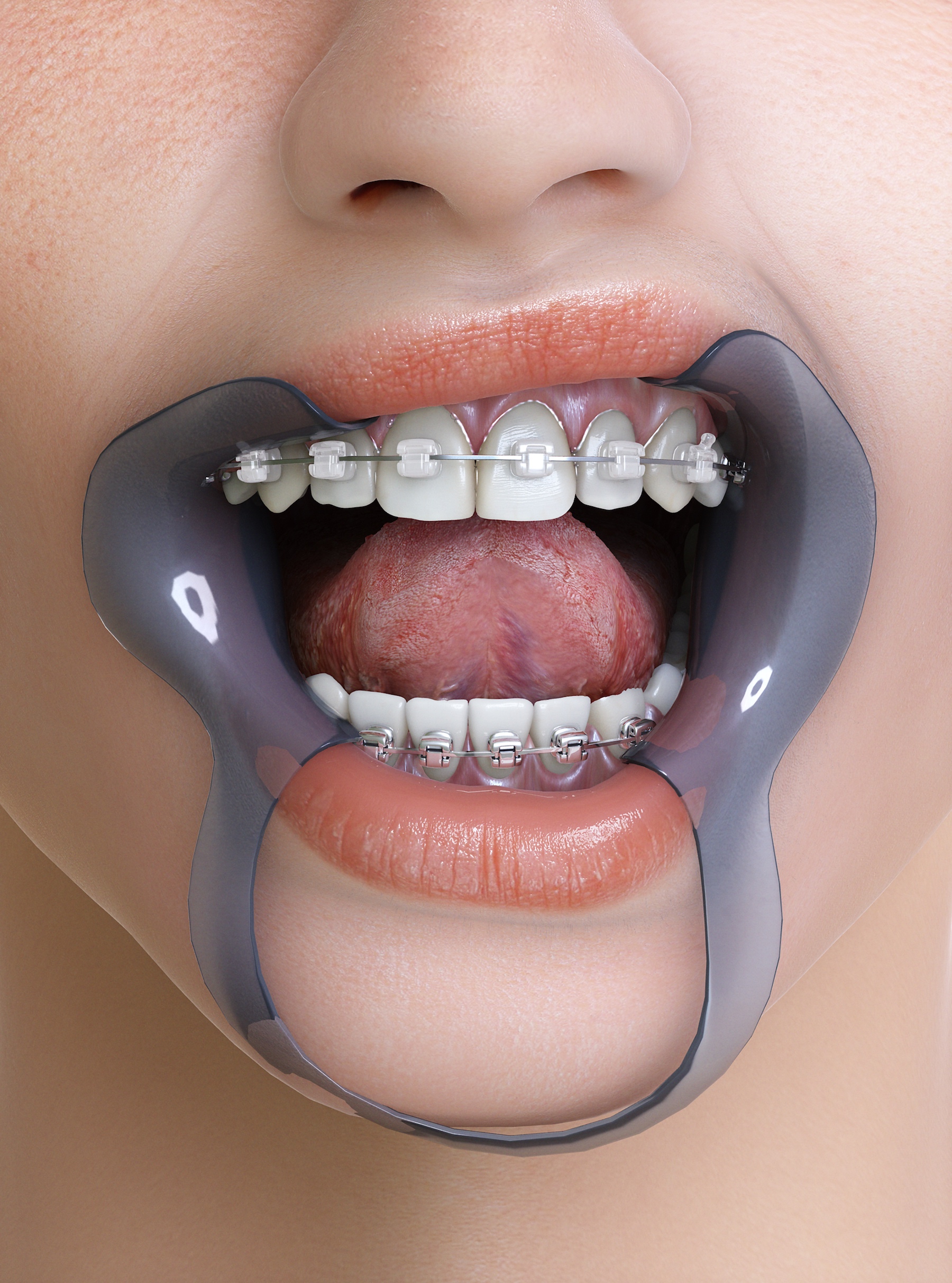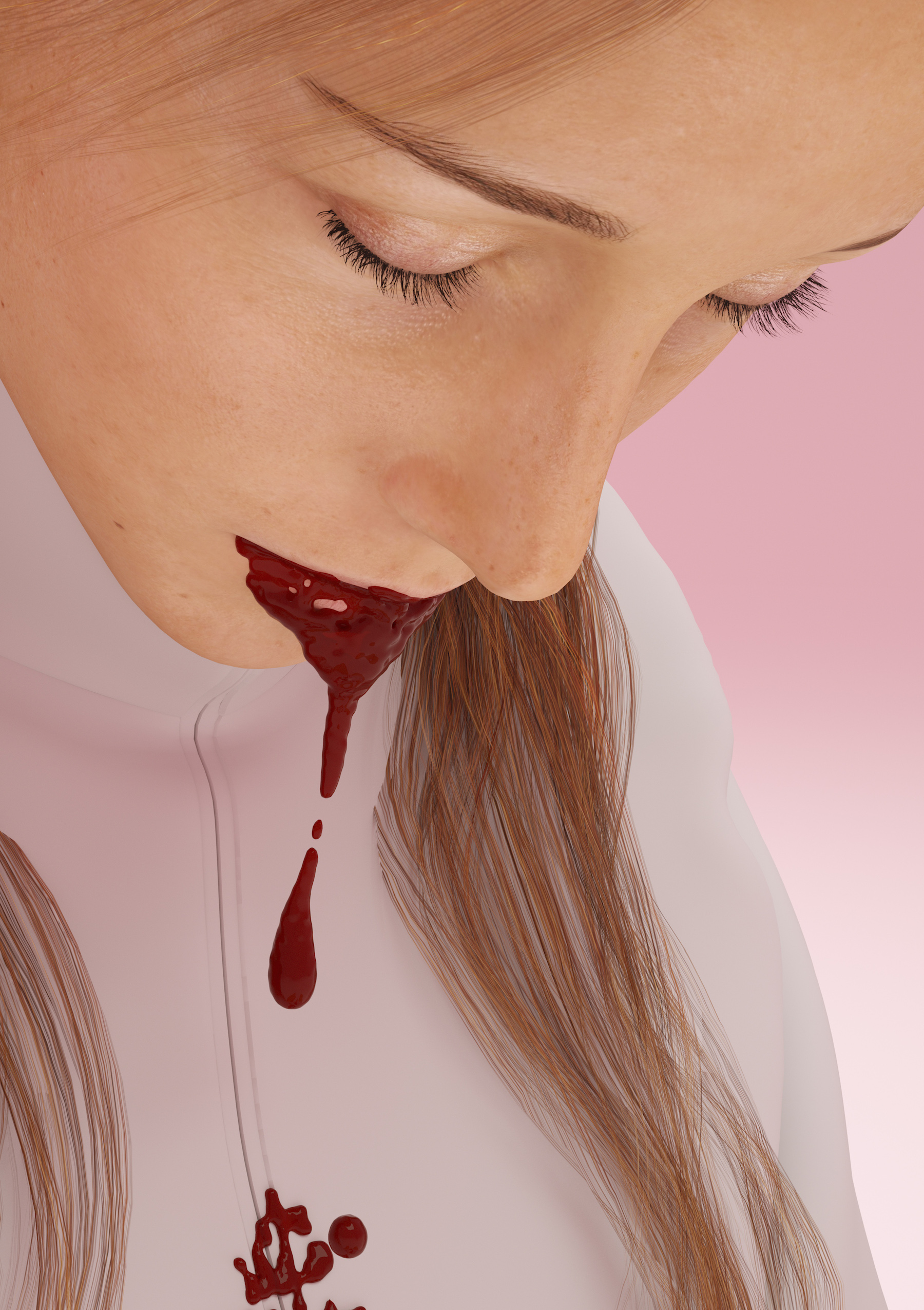
Cooper plays up to the idea of perfection in her pieces, using stock CG models of human figures that she obtains online. The models come packaged in a basic framework and she then imports them into different 3D software for animation—and for the purposes of sabotaging their intended use. Her figures often maintain their glossy exteriors. In the artist’s Ways to Scale—an installation at Vitrine gallery in London this spring which spread across the entire, general public-facing front wall of the gallery—the sabotage began to take a more explicit form, as the artist introduced decaying CG bodies and offered an image of rotten, sore-covered imperfection alongside her smooth-skinned regular players.
The artist spoke to me from her ongoing residency at the Rijksakademie in Amsterdam, where she continues to experiment with these new figures, as well as the ways in which cephalopods (the animal family which includes jellyfish and squid) can alter their genetic make-up without changing the genes themselves.
How does the idea of perfection feed into your practice?
It’s always the question of: How do you sabotage the intended use? What are these aesthetics and what are they used for? It’s something I’ve been thinking about a lot with what’s been happening politically at the moment—about which aesthetics and ideologies are aligned. There is the idea that this kind of image restricts us as women or bodies. I’ve been working with this material for three years and since I started it has always been about my subjective position with these bodies, how that might be moved, and how I can form new connections. It is always about what representation is, what these aesthetics mean, and how they can become useful.

It’s interesting to see a more graphic aesthetic in your recent work (the skin and bloodiness of some of the figures) mix with the really clean, smooth skin of your previously used figures.
There was a misreading with the work from some, that I was presenting these computer-generated women, not from a critical position but as though it was something I aspire to. When I look at these images they’re obviously incredibly desirable but they’re also violent. It’s that mixture and that tension that I’ve wanted to work through. With the new bodies, I wondered what it would mean to present an image of sickness or illness—the antithesis of that.
I made a piece last year which works with one of the zombie characters and there’s a bit in the video between this, let’s say, “perfect” computer-generated body and this half-dead, half-made body where they’re performing touch sign language. What kind of politics might these new bodies physically embody? It’s a little more chaotic and that was really important as it’s such a public space at Vitrine. It’s beside a cinema in a clearly gentrified part of the city and I was interested in the slippages of how that might be read. The models I use are recognizable as models that sell you stuff, the models of capitalism, and there might be a slippage in what people perceive as art.
Do you think there’s a huge difference between the advertising aesthetic and computer-generated aesthetic?
I feel like they’re a little bit interchangeable. With advertising images there’s a real scale and I was trying to avoid that while pointing to it at the same time. I wanted it to not be too quiet, but it’s kind of like a still-life shot.
I’m always interested in what these models are made for. Some are made for pornography, some for computer games, some advertising. Some have a really weird sexuality, it’s really bizarre, there’s a real violence in some of them.
Why is it particularly the female body and experience that you focus on?
Within computer-generated material, these bodies are more extreme. They’re definitely more sexualized, and I have always been more interested in female forms of labour and representation. The main image I’ve used over the last few years has been a white woman. It’s this idea of the perfect white woman and we need to sabotage that: it’s a complete fiction. I want to use it to see how we can explore more positions and more fictions that are useful for us. If I worked with male computer-generated models they would look more realistic, as the male models are a much better spec. Also, the female models of colour are really basic. So it interests me that, even within this fictional world, there is a hierarchy.
Do you feel the images of perfection that surrounded you growing up feed into the work?
I’m from Liverpool and I think there are hyper-representational ways that women relate to the image somewhere like Liverpool, but it’s also really savvy. We’re not unaware of how problematic our relationship with representational images is. There are clichés but it’s a very dogmatic relationship. Where I grew up there’s almost a drag element but at the same time there is a fascinating way that female communities are built—it’s the combination of heightened images of women and the savvy relationship of how they function and how they’re reperformed by women.
I’m thirty-three and I’m really interested in how even younger artists are working. There’s a really intense relationship and awareness of your own image. Someone like Donna Haraway would talk about this, we’re already within technology so we can’t be outside of these things.

Your new work also looks at animals from the cephalopod group who can alter their genetic make-up. Where did this idea begin?
It feels like Paul B. Preciado territory, hacking your own body and how you can be between genders or move between things. I liked this as a speculative position. In the work there is a hacking element of taking models and working with them and reinserting them in my images. I don’t know what their intended use is, but it’s not what I’m working with them for. A lot of the models are purchased and then I bring them into various programmes.
Can you tell me a bit about your use of space? Your figures are often isolated, from other figures but also from any sense of a solid world around them. The physical space that the pieces are shown in also often plays into the works.
There’s a very physical, sculptural element to the work. I don’t tend to make films with the intention of them being shown on their own but within this environment. I think a lot about how stuff is presented and institutional modes of display. Some of my early experiences of going to the Tate in Liverpool were combined with going to the designer concept stores in Liverpool. Those two things are synonymous with each other. Working on the scale of advertising is also important to how the work is presented, with these female representations who are larger than life.
All images courtesy the artist
This feature originally appeared in Issue 32
BUY NOW





